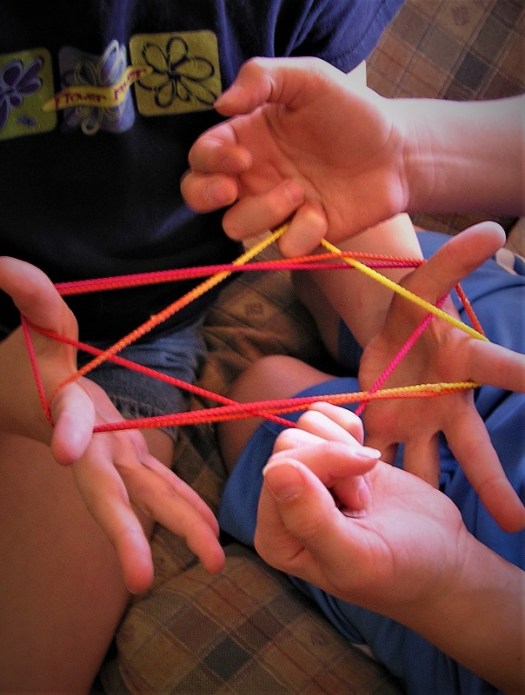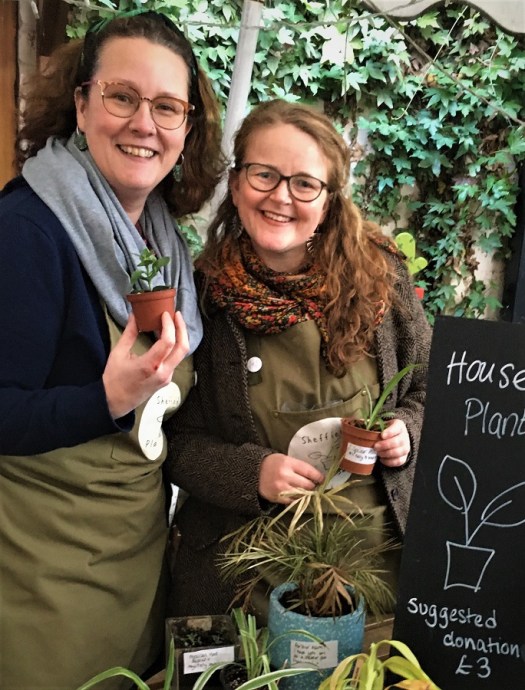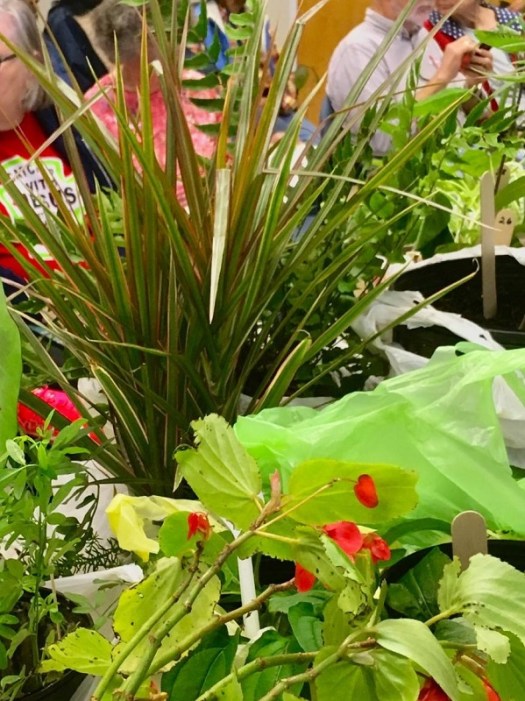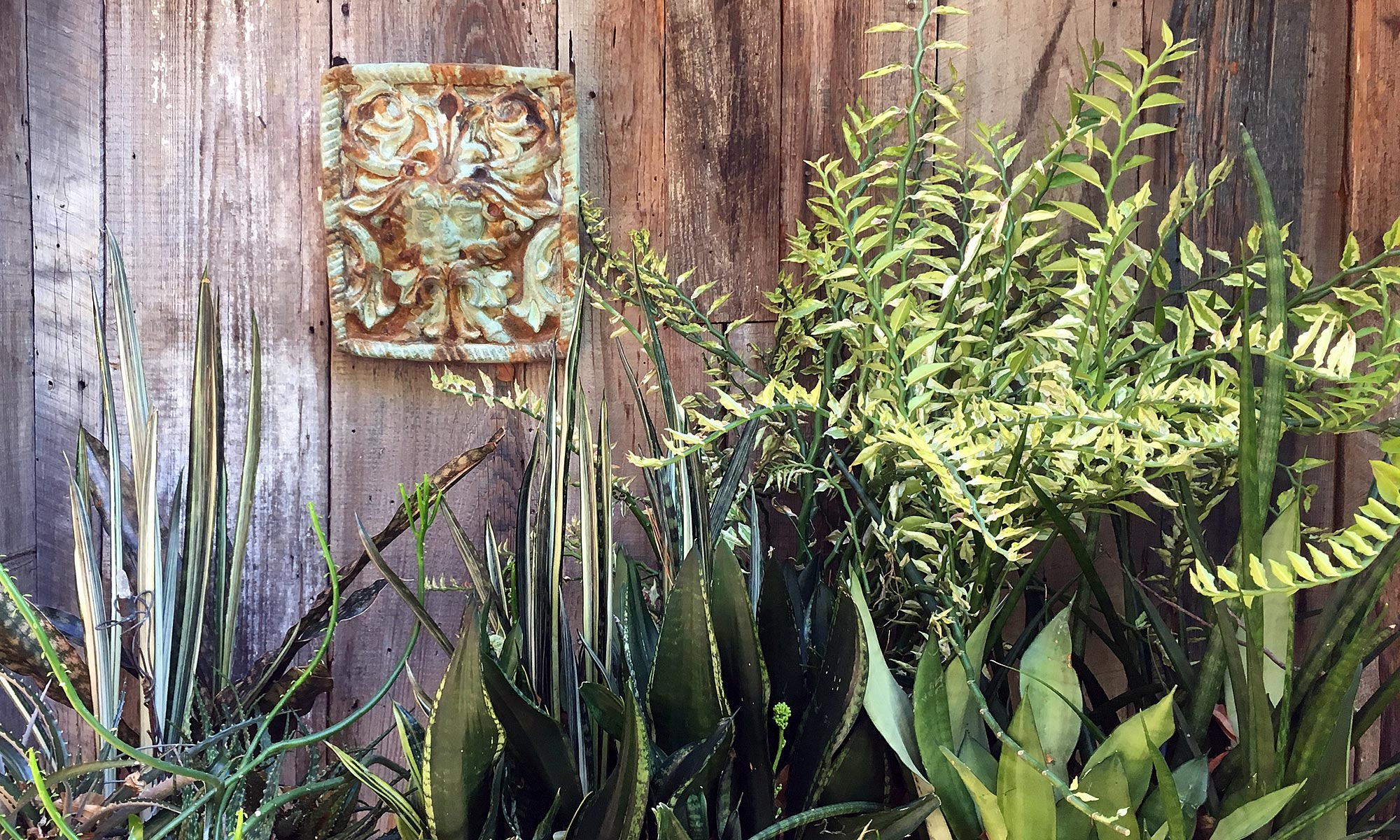Pssst! I got jewels of Opar and a string of pearls… wanna make a deal?
My garden is stuffed with hard-to-find plants that came to me with sweet folk names and back stories.Their charms have been spread over and under fences around the world, cutting across cultures and languages.
But worthy as they are, many are not easily found for sale – to get a start, you gotta have informal connections.
They are passed around like the simple string game which has no written instructions yet is known by children worldwide.

For decades, as the co-author of the Passalong Plants book, I’ve been overseeing small and large-scale plant swaps. Often there is little in common between participants except a love of plants.
True anecdote: Some years back the Pulitzer Prize winning author Eudora Welty told me over dinner that her mother “stopped going to her garden club meetings when they stopped swapping plants.”
But not to worry, thanks to folks with generous spirits, the tradition is alive and well at plant swaps around the world. I’m featuring just three here.

In April, 1990 Janice Watkins, the librarian in the small town of Flora, Mississippi, started what’s now the longest-running twice-yearly plant swap in the known universe. Men, women and children schlep pots, buckets, and bags of amateur home-grown shrubs, vines, seedling trees, bulbs, seeds, tropical plants, cacti and succulents, wildflowers, rare vegetables, and herbs this “sharing of the largesse.”
And generous gardeners along America’s Gulf Coast gather twice a year in Mobile, Alabama, to swap plants and be entertained by tales shared by horticulturist Bill Nicolas as he discusses each entry before the actual swap. The stories are often as interesting as the plants themselves!
Janice Watkins and Bill Nicolas
PLANT SWAP UK – Bringing people and plants together
Several years ago Fay and Sarah, a couple of gardening friends living in Sheffield, England, took to heart a casual Facebook request for plants to swap, and started what quickly took off to become now the longest continuous plant swap in the UK.

Now the well-established PlantSwap UK holds every-other-month plant swaps to which an eclectic throng from all walks of life bring plants – including vegetables and herbs, fruits, annuals and perennials, shrubs, trees, potted tropicals, and more, plus bulbs, seeds, rooted cuttings, and divisions, all from their own gardens.
I had the pleasure of attending one of their swaps on a chilly winter day against which the hundred-plus participants were bundled up in scarves and gloves. There was an incredible variety of both plants and people, and everyone chatted and shared genially after Sarah kicked off the swap with the simple instructions of “Take what you need, don’t take too much, and be courteous” – which, being British, they most certainly were!
Lots of laughter, impromptu advice, meeting new friends…plus plants! It was an amazing gathering of “non-joiners” – the kinds of folks who aren’t entirely comfortable around garden club settings. I loved even the home-made plant labels!

Their cheery website ( found by clicking here ) has lots of photos and encouraging notes, plus tips on how to organize your own plant swap. And while the swaps bring people and plants together physically, the web site also hosts an online community forum on which people can ask about growing their plants, or chime in and help answer questions.
Here is a short interview I did with Fay and Sarah:

Recycled containers
LORE, NOT LABELS
The sheer variety of plants brought to plant swaps over the decades has been astounding. There are the usual begonias, peppers, and crape myrtles, but the best are the lovably weird ones, some rarely ever seen for sale anywhere.
The left-brain horticulturist in me knows proper Latin appellations, but none are as descriptive as their sweet country names like milk and wine lily, butcher broom, cashmere bouquet, prince’s feather, hen and chicks, touch-me-not, bird’s eye pepper, walking iris, Turk’s turban, horse tail, chicken gizzard, string of pearls, snake plant, moon and stars melon, beautyberry, lady fingers, Moses in the boat, elephant ears, devil’s backbone, hidden ginger, everlasting, rose of Sharon, Jacobs ladder, jewels of Opar, soapwort, rice paper, dipper Jew, roselle, country girls…
Wish I had space to share the stories of each one, but truth is this short list only scratches the surface of what typically shows up at a plant swap. (*see below)

Edible and ornamental cousins “roselle” and burgundy okra are hard to find commercially.
CAN I GROW IT?
Not that the names really matter – what garden variety gardeners want to know is does it need sun or shade, can it stay outside all winter, and will it “get away from you” (does it spread too quickly)?
After several decades of these informal sharing fests, I’ve noticed that every single pass-along plant has three important characteristics without which it would likely disappear after the first gardener set it out.
- Is it valuable? Being beautiful, edible, family or historic heirloom, or attractive to butterflies are just a few merits; the more ways a plant is desirable, the more different people will want to give it a go.
- Is it easy to grow nearly anywhere by nearly anyone? Will it thrive in nearly any kind of soil, through thick and thin, heat and cold, drought and rain, with little pruning or other care? is it pest and disease resistant? The fussier a plant is, the fewer people will keep it around for long.
- How easy is it to share? No matter how valuable, durable or fuss-free, if it can’t be easily propagated from seed, divided, or rooted without special equipment and know-how, it won’t travel to many gardens.
PLANT SWAP MECHANICS

When organizing a plant swap, keep it simple. Limit the number of plants anyone can enter to one or two (others can be traded later). Stick a number on each one (Sharpie pen and popsicle sticks, plastic knives, sticky notes, whatever); the name of the plant is also helpful but not necessary. Put a corresponding number on a folded piece of paper in a hat or box. If possible, have someone describe some of the plants, give people opportunities to tell a little about the more unusual ones.
Then pass the hat around for folks to draw numbers. Whatever number is drawn is the plant they get – like it or not, already grow it or not; the real swapping goes on later in the parking lot.
Coolest thing about plant swaps is the sheer diversity of the gardeners themselves. Old, young, black or white or brown, regardless of political, religious or sexual persuasion, education and economic status, heirloom plants ignore social protocol. The plants simply don’t care who “your mama ‘n them” are. They just want to be grown and shared.
A plant swap is a horticultural free-for-all that mixes interesting plants and interested people together – where they all get along just fine.

*Okay, I’ll share one story. A small, heavily-reseeding annual called “jewels of Opar” (Talinum paniculatum) that grows literally all over the US and is spread deliberately between gardeners or accidentally if some of its seeds hitchhike into gardeners in the potting soil of other passalong plants. Its smooth, perfectly edible foliage is nice enough, plus there are some cool varieties, including variegated and golden or chartreause. The non-stop airy sprays of tiny pink flowers turn to orange and red seed balls. Though a bit on the weedy side, the Southeastern and Caribbean native is easy to control with a pulling or two of the excess plants.

But its popular common name comes from a book published in 1918 by Edgar Rice Burrows named Tarzan and the Jewels of Opar. In the book, the ape-man was dazed by an earthquake and fell into a pit where he discovered the hidden treasures of the Oparians – the descendents of the lost continent of Atlantis. He put some of the jewels into his loin cloth, and when he came to his senses he took them back to civilization to fund the lifestyle he enjoyed as Lord John Greystoke with his Lady Jane.
How’s THAT for the back story for an otherwise ordinary little passalong plant?







I have that book of yours. It is informative and entertaining. Jewels of Opar is one of my “pass along plants.”
LikeLiked by 1 person
It’s a wonderful story as well! I got my “start” from the garden of Elizabeth Lawrence in North Carolina and have shared with countless gardeners ever since…
LikeLiked by 1 person
Is it cheating to procure cool plants from the greenwaste recyclery piles left at the curb in San Jose, and then brag about them later?
LikeLiked by 1 person
It is never cheating to glean leftovers! Some of my best plants have been castoffs more than passalongs – including a potted Aglaonema I rescued from a curb then repotted and tended until it won a blue ribbon at the state flower show!
II ain’t bragging if it’s true.
LikeLiked by 1 person
HEY! That was MY Aglaonema!
LikeLike
Hey, have you been gone for a while, or have I just been neglecting your articles?
LikeLike
Nope, ain’t been gone (though I’m back in the States for my fall lectures from my summer and winter home in England). It’s just that because I write syndicated newspaper columns and host a live NPR program every week I’m not as inclined to blog as often – only when something out of the mainstream strikes my fancy…
LikeLiked by 1 person
Oh, of course. Work gets in the way.
LikeLike
Felder I laughed so much at your talk at The Rose Emporium. Back in Brenham I was lost and popped into a minute market named “Felders Place” to ask for directions. First two people gave me different ways to go I frowned at them they laughed and the third guy said”Can’t git there from here! I laughed and said “Of course you can’t”. Walked out laughing.
LikeLiked by 1 person
PlantSwap is a cool idea. They have shows by the different plant groups and societies here where you can get various plants, bulbs, and flowers from enthusiasts.
LikeLiked by 1 person
Yeah, there are all sorts of local groups and variations on how they do it… but ain’t it GREAT!? Like having kittens to share…
LikeLike
So glad I found you blog. Love it love you show,and your humor about growing plants thanks
LikeLike